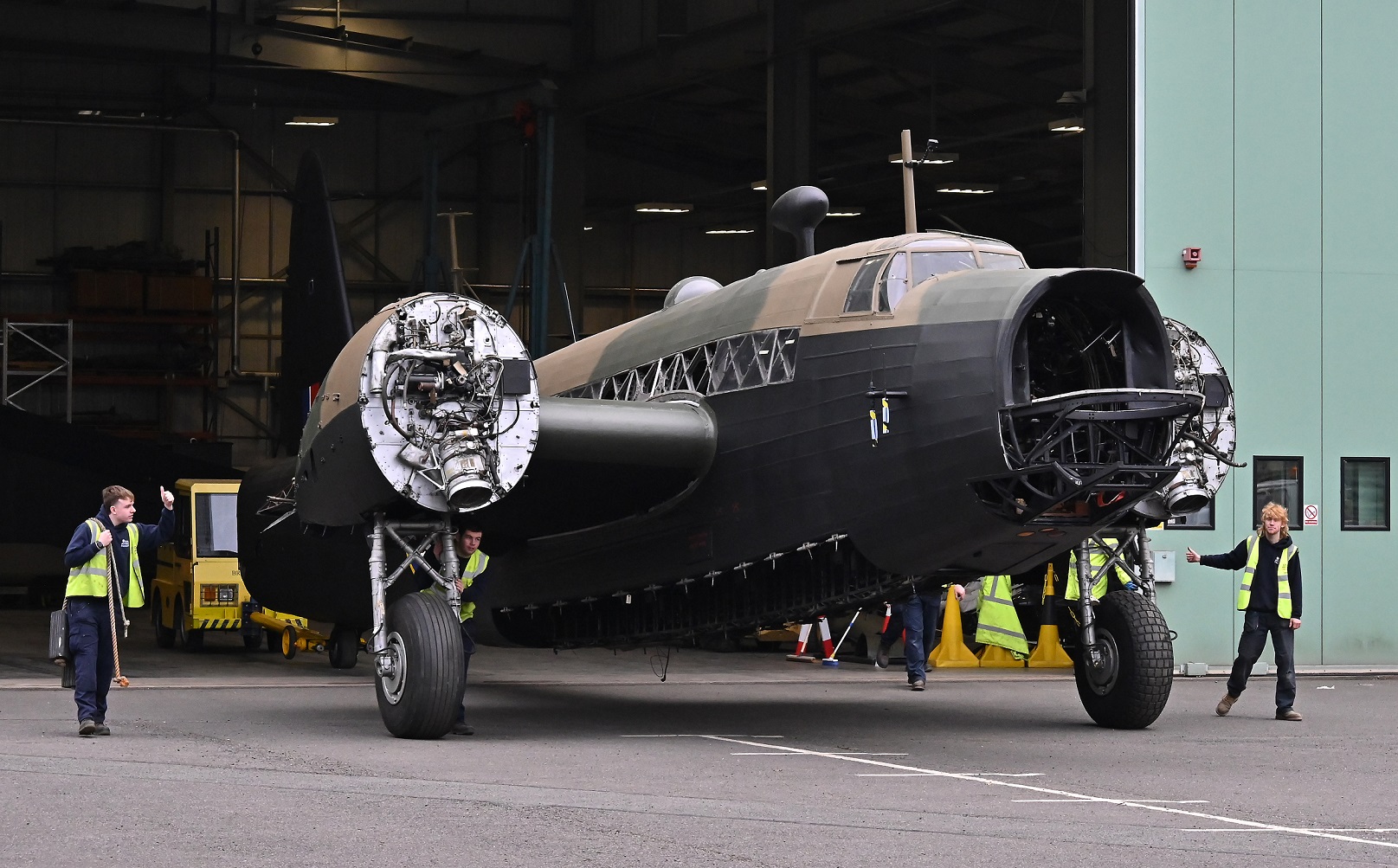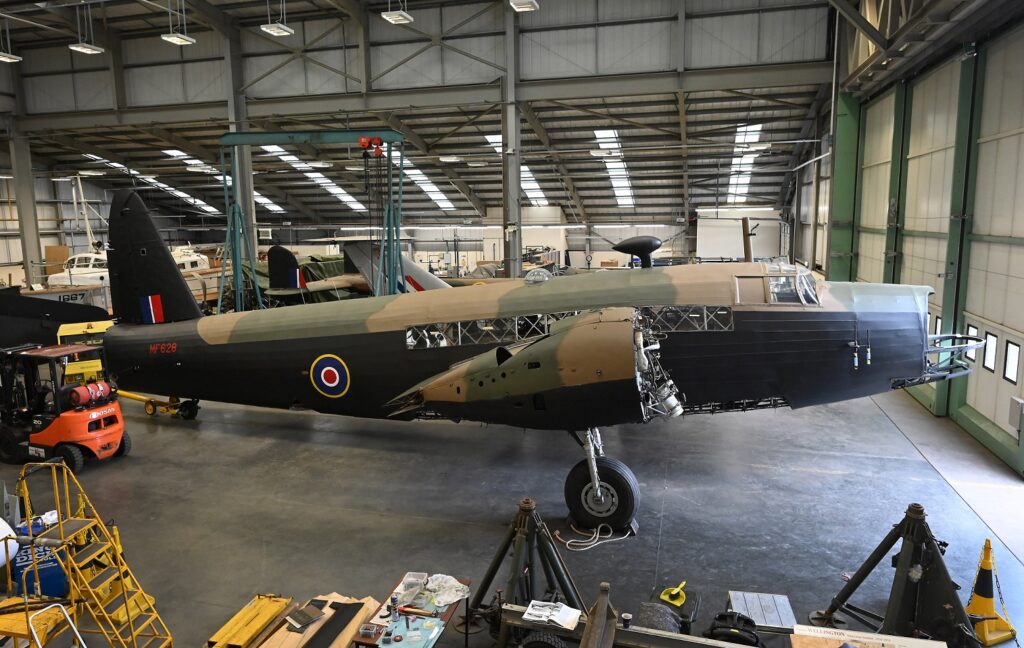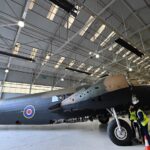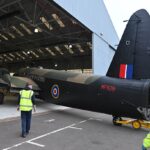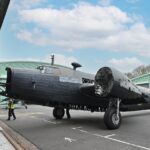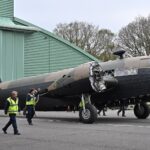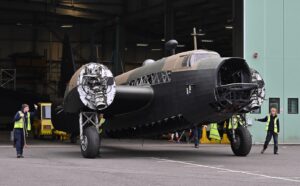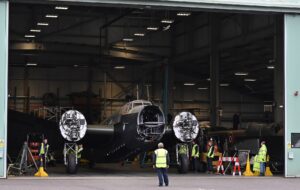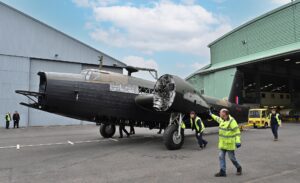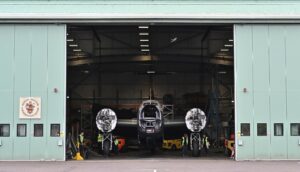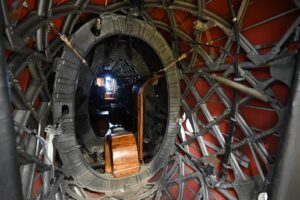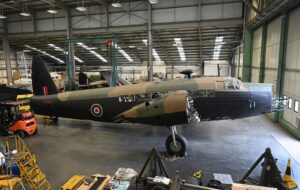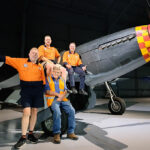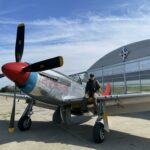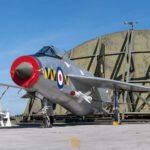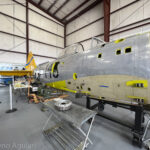A WWII Vickers Wellington bomber has been restored to its former glory after more than a decade of conservation at the Royal Air Force Museum Midlands. The Wellington, one of only two remaining, has moved from the Conservation Centre into the public display hangar and will be the centerpiece of a new Bomber Command exhibition opening in May.
The fuselage and inner wings section can now be viewed by visitors, while the remaining work of attaching the huge 31ft outer wings, engines, propellers, and front turret to the aircraft will be carried out over the next few weeks. Members of the public will be able to view some of the final steps toward its completion as the Museum’s Conservation teamwork within the hangar.
The Wellington was widely used as a night bomber in the early years of the Second World War, and was famous for its geodetic fuselage structure designed by Barnes Wallis. By 1942 Wellingtons were the most numerous aircraft in Bomber Command. They began to be replaced by more capable four-engined heavy bombers such as Halifaxes and Lancasters. Wellingtons continued to operate with Bomber Command as a training aircraft and served in North Africa, Italy, the Far East, and Coastal Command.
The Museum’s example was constructed in 1944 and served with the No. 1 Air Navigation Training School between 1949 and 1953. Although not operational in the Second World War, it represents the role played in the bombing campaign against Germany. This much-loved aircraft is one of only two Wellingtons to survive into the present day and the only one complete with its fabric outer skin. The aircraft is now on public display at the RAF Museum Midlands for the first time. After almost 40 years on display at the Museum’s site in London, the aircraft was transported by road to the Museum’s Conservation Centre in the Midlands in July 2010, for work treating corrosion to its structure and a complete replacement of its fragile Irish linen outer skin.
The extensive restoration of the Wellington is one of the largest aircraft projects to be undertaken by the Museum’s Conservation Centre team. Work has been carried out by Technicians, Apprentices, and a team of Volunteers, including one Volunteer who previously worked on Wellingtons during his RAF instructional airframe training more than half a century ago. During the conservation process, the Wellington was regularly visited by the late Mary Stopes-Roe, daughter of the aircraft designer Barnes Wallis. The final stages of the project will be completed within the next few weeks, in time for the Bomber Command exhibition opening on May 16th
The Museum is open daily from 10 am and admission is free. Pre-book your arrival time online at rafmuseum.org/midlands.







